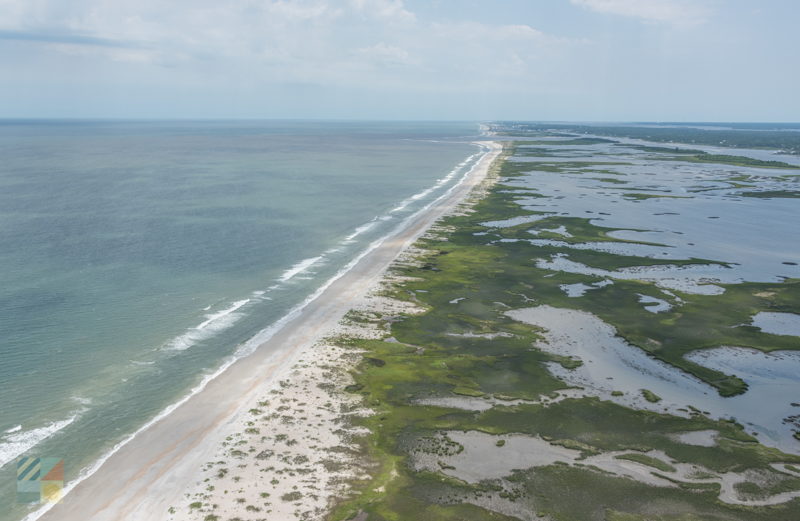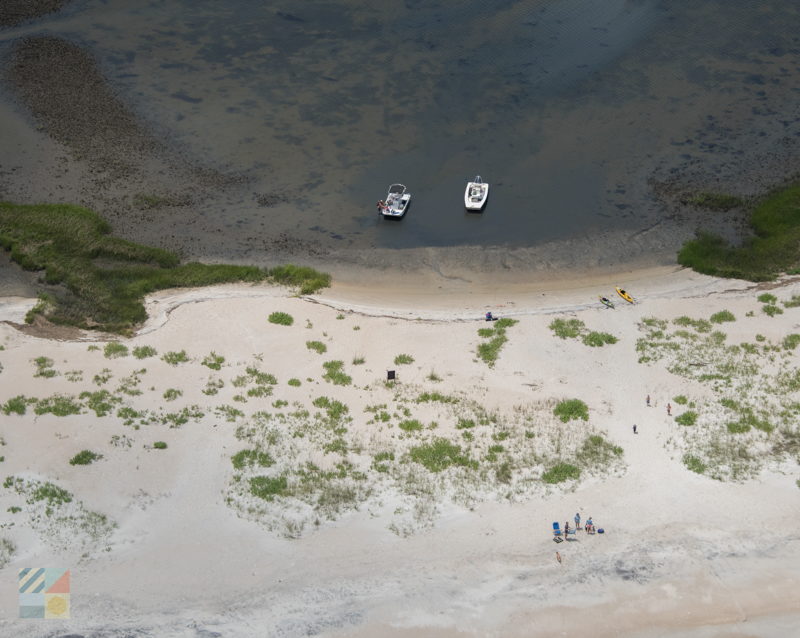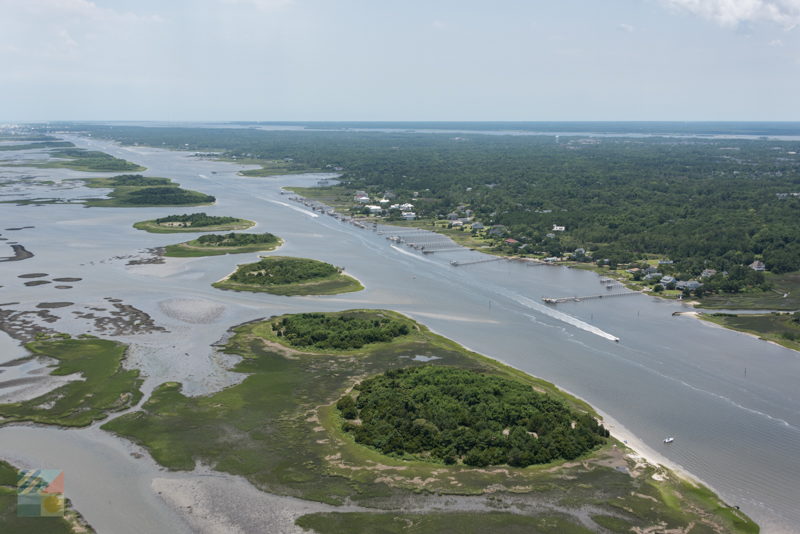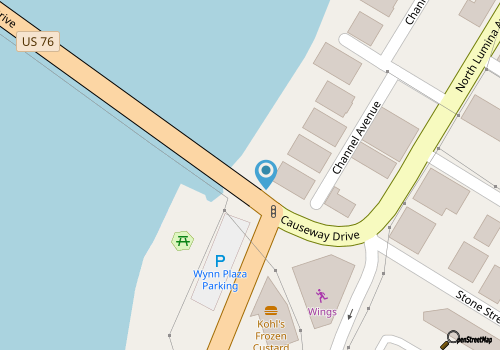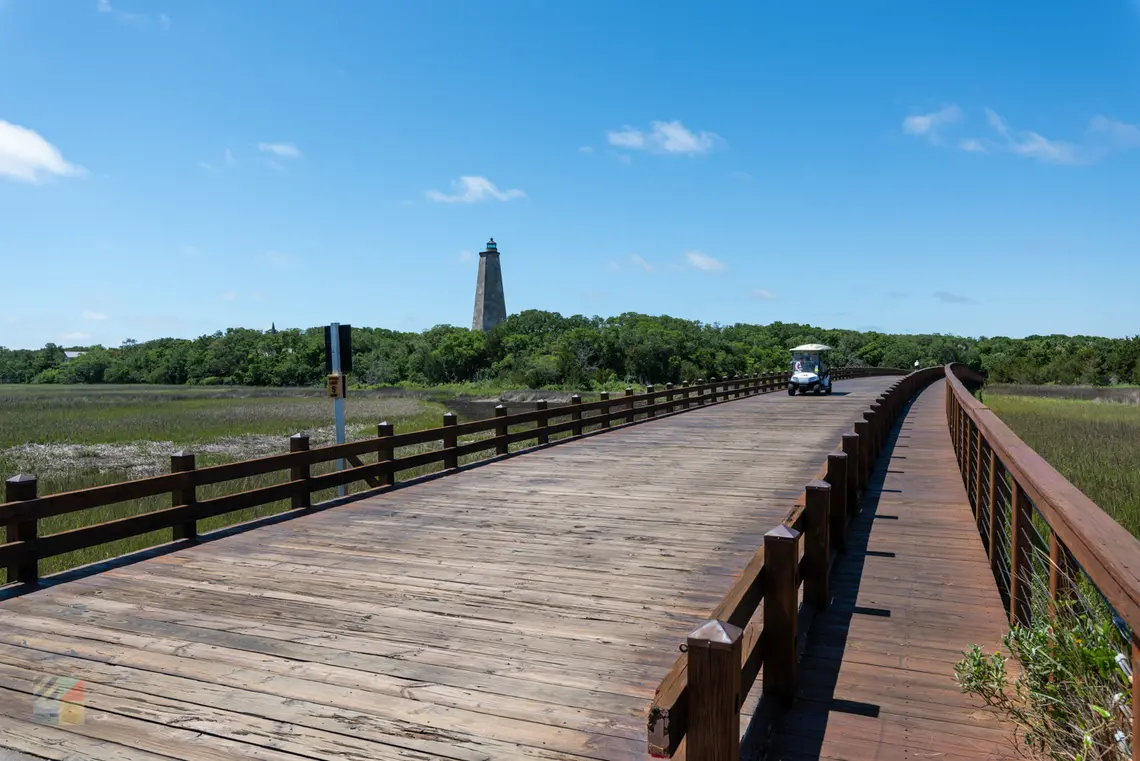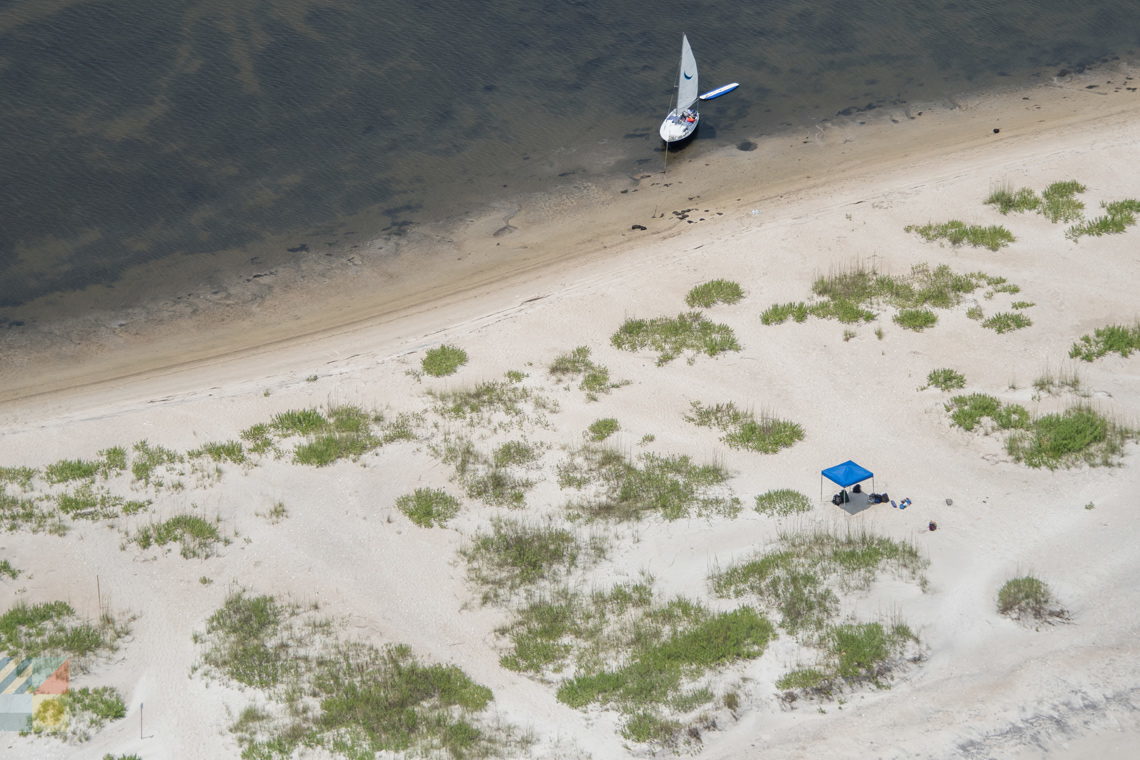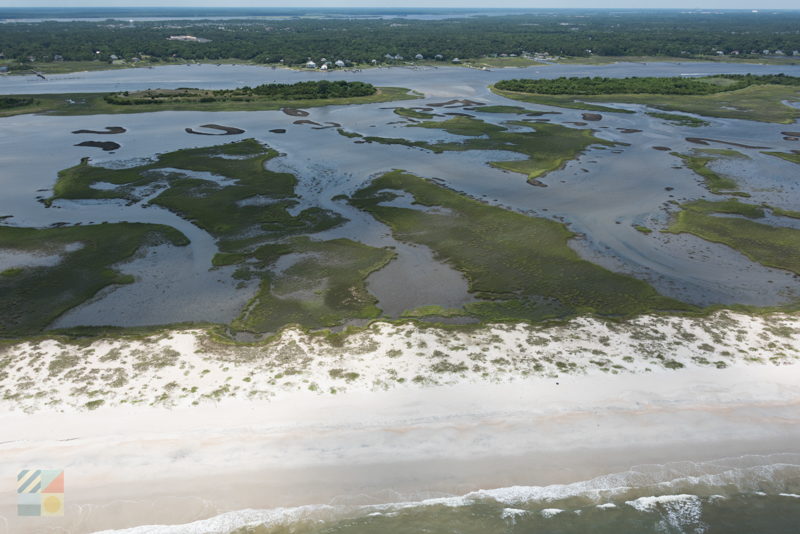
Situated on the edge of the Cape Fear Coastline in between the bustling towns of Wrightsville Beach and Carolina Beach, the Masonboro Island Coastal Reserve is a unique slice of undeveloped and natural barrier island shoreline that’s an important habitat for countless coastal species.
Hard to reach but wonderfully isolated, visitors who make a trip to this literal deserted island will be rewarded with great shelling, beautiful landscapes, and miles of beaches to go around.
About the Masonboro Island Coastal Reserve
The Masonboro Island Coastal Reserve is part of the NC Coastal Reserve and National Estuarine Research Reserve system (NCNERR), and is one of four National Reserve Sites (and 10 total sites) that fall under the Division of Coastal Management’s protection. The other three national sites are the Currituck Banks in the northern Outer Banks, Rachel Carson Reserve which is adjacent to Beaufort, NC, and Zeke’s Island which is situated just a few miles away.
Masonboro Island is the largest undisturbed barrier island along the southern NC coastline, as well as the largest component of the NCNERR system. Comprising of a total of 5,653 acres, the island features 8.4 miles of beaches, as well as a wide variety of coastal habitats which includes salt marshes, subtidal soft bottoms, tidal flats, hard surfaces, maritime forest, shrub thickets, dredge spoil areas, grasslands, sand dunes, and ocean-facing beaches.
The island is bordered to the east by the Atlantic Ocean, and to the west by the Atlantic Intracoastal Waterway. Masonboro Inlet separates the island to the north from Wrightsville Beach, while Carolina Beach Inlet serves as its southern water border.
This natural setting and collection of varying ecosystems caters to a wide range of both common, migrating, and rare coastal residents. The island is a popular destination for loggerhead and green sea turtles to lay their eggs, and a wide variety of threatened or endangered species have been spotted at the site, including black skimmers, Wilson’s plovers, and least terns, which all nest on the island during the warm weather months. The rich Masonboro Sound waters on the western side of the island also serve as an essential nursery site for a wide range of popular local catches including spot, mullet, pompano, menhaden, flounder, and bluefish.
As a result of this isolated and wild environment, visitors will be treated to a myriad of natural activities as well as some of the most scenic shorelines in the Cape Fear area.
Accessing the Masonboro Island Coastal Reserve
The tricky part about enjoying Masonboro Island Coastal Reserve is getting there, but visitors will find a handful of options for reaching and enjoying this isolated barrier island.
Masonboro Island Coastal Reserve can only be reached by boat, and private boat owners (smaller vessels recommended) and kayakers can anchor or land on the beaches of the north or south sides of the island. From this spot, trails from the water’s edge lead across the island to the beaches, where visitors can walk along the shore for literally miles.
Public boat launches are found in both Carolina Beach and Wrightsville Beach for visitors who want to cruise to the island.
Visitors who don’t have a vessel will also find water taxi and / or tour providers available in Carolina Beach, Wrightsville Beach, and Wilmington. These “ferry services” can provide everything from basic transport to and from the island to full-blown adventures that can combine fishing, shelling, and even kid-friendly pirate treasure hunts. Contact individual charter or tour businesses, or local marinas in your vacation community, for additional options.
Things to do at the Masonboro Island Coastal Reserve
Once on the island, visitors will find a wide array of ways to enjoy the incredibly remote and beautiful scene.
Shelling - Masonboro Island is renowned as one of the best shelling destinations in the Cape Fear region, thanks to ample tidal flats or pools as well as its inherent isolated nature. Shell seekers will want to patrol the beaches around low tide to look for whelks, olive shells, moon snails, and even the rare Scotch Bonnets which periodically wash ashore.
Fishing – There’s all sorts of great fishing opportunities to be enjoyed around Masonboro Island, which can range from the big speckled trout that make an appearance along the jetties of Masonboro Inlet, to the relaxed surf fishing with little beach competition. Inshore charter trips are also available of the surrounding waters, and visitors who are commandeering their own fishing expedition will want to ensure they have a saltwater fishing license in hand before casting a line.
Birdwatching – Birdwatching is exceptional at this remote island destination, and wildlife fans will find a myriad of different species in every direction. Look for brown pelicans, white ibis, gulls, herons, terns and egrets along both the ocean and western facing shoreline, as well as rarer species including Wilson’s plovers, American oystercatchers, willets, eastern painted buntings, least terns and black skimmers on the sand.
Kayaking – The western borders of Masonboro Island are a dream for paddlers, thanks to a network of salty channels that are on the borders of the heavily used Intracoastal Waterway, and which provide miles of wildlife watching and stunning scenery. Try to plan a trip close to high tide to ensure plenty of watery paths that are deep enough to paddle through, and watch for water moccasins and other local residents that frequent the area waters as well.
Beaching - The beaches of Masonboro Island are simply stunning, and are ideal for swimming, surf fishing, splashing, surfing, and just enjoying miles of room to roam. Visitors should note that there are no lifeguards on the island, (and very few other people), and should proceed with caution as needed.
Hiking – A small network of trails wind from the north and south sides of the island to the beaches, which present a nice slice of the local habitats that are found within the Masonboro Island Coastal Reserve. In addition, beach fans can walk the entire 8.4 mile length of the island along the oceanside for incredible Atlantic views throughout a sandy trek. Use caution on the western edge of the island, as the tidal pools and salt marshes are tricky and deceptively soft terrain.
Photography – For gorgeous and undisturbed beach landscapes, there’s no place like Masonboro Island. Head to the local inlets – Carolina Beach Inlet and Masonboro Inlet – for a stunning on-the-water sunrise and / or sunset shot.
Camping – Rustic camping is allowed on Masonboro Island! Visitors should note that the facilities are severely limited, with no public restrooms, amenities, power, etc. There are also strict regulations regarding litter, personal items, campfires, wildlife, pets, etc. For more information on camping on Masonboro Island, visit this link.
Tips and Tricks for Exploring the Masonboro Island Coastal Reserve
- While visitors can kayak to Masonboro Island, extreme caution should be used. Avoid the local inlets whenever possible to stay away from swift currents, and watch for maritime traffic of all varieties when crossing the heavily used Intracoastal Waterway.
- Pack lots of bug spray and sunscreen! With few human visitors, the mosquito population can be thick, so bug spray is all but required for a visit – and especially along the western regions and inland trails on the island, which are far away from the windy ocean beaches.
- Bring trash bags. Masonboro Island has a strict “take out what you bring in” policy, which helps keep the natural landscape inviting and undisturbed. This is especially essential if you are planning a full-day trip, or an overnight camping adventure.
- Dogs are allowed on Masonboro Island but MUST be leashed at all times.
- Personal property may not be left on the island for more than 48 hours.
- Beachcombers who want to find great shells will want to plan a trip a couple days after a hurricane or nor’easter has swept through the area or has passed offshore. Great shells tend to wash up on the beaches a couple days after a storm, after the winds and waters have calmed down.
- Be sure and bring everything you’ll need when you visit – including water, snacks, and supplies. There are no stores or development of any kind on Masonboro Island, so coming prepared is key.
- Fall is an amazing time to visit! The fishing and shelling are at their best, the “crowds” are light, and the mosquitos are not as prevalent.
- There are miles of paddle trails for kayaking adventures. Visit the reserve’s website for a map of the trails on the western edge of the island that are ideal for natural explorations.
- Seasonal area closures may be present on the shoreline, due to bird or sea turtle nesting activity. Watch for posted signs and marked off areas, and proceed accordingly.
Masonboro Island may be difficult to reach, but for beach purists, the fact that this island is somewhat inaccessible makes it a true gem along the Cape Fear coastline. With beautiful beaches, great shelling, and a fascinating array of varying habitats, Masonboro Island is a true treasure for Cape Fear area visitors who like their seashore expeditions to be a little on the wild side.
Frequently Asked Questions
Where is the Masonboro Island Coastal Reserve?
The Masonboro Island Coastal Reserve is located just off the coast of Wilmington, and is bordered to the west by the Intracoastal Waterway, and bordered to the east by the Atlantic Ocean. The Masonboro Inlet separates it from Wrightsville Beach to the north, while the Carolina Beach Inlet separates it from Pleasure Island to the south.
How do you get to the Masonboro Island Coastal Reserve?
Visitors can only reach the Masonboro Island Coastal Reserve by a boat. Privately owned vessels can land on the beaches that hug the north and south sides of the islands, and privately owned pedestrian ferries access the Masonboro Island Coastal Reserve as well for a fee.
Why is the Masonboro Island Coastal Reserve special?
The Masonboro Island Coastal Reserve is the longest undeveloped and undisturbed barrier island in southern North Carolina, and serves as a home for a wide array of species. Migrating and coastal birds, fish, invertebrates, and sea turtles all use and visit the Masonboro Island Coastal Reserve, and the site is also an important destination for coastal research and education.
Can you drive to the Masonboro Island Coastal Reserve?
There is no way to access the Masonboro Island Coastal Reserve by vehicle, as the site can only be reached by boat. There are fee-based ferries and tours available for visitors who want to explore the Masonboro Island Coastal Reserve.
Where can you launch a boat to reach the Masonboro Island Coastal Reserve?
Boats can launch from a number of public and private marinas or launch sites in neighboring Wilmington, as well as Wrightsville Beach and Carolina Beach. There are no docks or slips within the undeveloped Masonboro Island Coastal Reserve, but boats can land on the area beaches.
Can you camp in the Masonboro Island Coastal Reserve?
Camping is allowed within the Masonboro Island Coastal Reserve, although visitors are advised to use areas that have obviously been utilized as campsites before. Campers should avoid staying on the dunes or vegetation, and should take out everything they take in. Visitors should also note that camping within the Masonboro Island Coastal Reserve is primitive, and there are no designated sites, drinking water, trash receptacles, or restrooms within the reserve.
What should you bring to visit the Masonboro Island Coastal Reserve?
Because the Masonboro Island Coastal Reserve is completely undeveloped, visitors will want to bring along all the supplies they’ll need for the duration of their stay, including drinking water, snacks, bug repellent, and trash bags.
Are there special events at the Masonboro Island Coastal Reserve?
While there are no set special events within the Masonboro Island Coastal Reserve, local schools and colleges, as well as area organizations, often use the site for research projects and / or educational programs and tours.
How large is the Masonboro Island Coastal Reserve?
The Masonboro Island Coastal Reserve is approximately 5,563 acres in area, and the island is 8.4 miles long, making it the longest barrier island in the southern portion of North Carolina.
Where can you stay at the Masonboro Island Coastal Reserve?
While only primitive camping is available at the Masonboro Island Coastal Reserve, (with no designated sites or facilities), the neighboring coastal communities of Carolina Beach and Wrightsville beach have ample accommodation options. Accommodations in these popular vacation destinations include hotels and motels, campgrounds and RV parks, and vacation rental homes or condos.
Are there restaurants near the Masonboro Island Coastal Reserve?
Though the Masonboro Island Coastal Reserve has no commercial development of any kind, there are dozens if not hundreds of restaurants at the nearby communities of Wrightsville Beach to the north, Carolina Beach to the south, and Wilmington to the southwest.
Are there restrooms at the Masonboro Island Coastal Reserve?
There are no restrooms within the Masonboro Island Coastal Reserve.
Are there mosquitos at the Masonboro Island Coastal Reserve?
Because of its isolation and acres of saltwater marshes, there can be mosquitos at the Masonboro Island Coastal Reserve, especially along the Intracoastal Waterway. Visitors will want to bring along plenty of bug spray, and stay close to the ocean beaches.
Are there snakes at the Masonboro Island Coastal Reserve?
There may be snakes within the Masonboro Island Coastal Reserve, especially along the Intracoastal Waterway and in marshy areas. Visitors should use caution and wear waders or closed toe shoes when exploring the woods and marshes of the reserve.
Are there hiking trails at the Masonboro Island Coastal Reserve?
There are no designated hiking trails within the Masonboro Island Coastal Reserve, but visitors will find plenty of room to roam and explore, which includes more than eight miles of ocean shoreline.
What kind of birds can be found at the Masonboro Island Coastal Reserve?
The Masonboro Island Coastal Reserve is a popular destination for an array of coastal and migrating birds, because of its lack of development and locale along the Atlantic Flyway. Unique species, which includes endangered or threatened birds, include American oystercatchers, black skimmers, Wilson’s plovers, and least terns, which all nest on the island in the summer months.
Where can you go birdwatching in the Masonboro Island Coastal Reserve?
On the oceanside of the Masonboro Island Coastal Reserve, visitors will be able to spot a wide array of coastal species, which includes piping plovers, oyster catchers, black skimmers, brown pelicans, cormorants, and least terns. Closer to the Intracoastal Waterway, birdwatchers will likely be able to spot herons, egrets, and ibises hunting in the area marshes. A boat or kayak will be required to reach the reserve, although tours from private vendors are available as well.
What is the landscape like at the Masonboro Island Coastal Reserve?
The Masonboro Island Coastal Reserve is typical of a North Carolina barrier island, with ocean beaches that extend for more than eight miles. Roughly 87% of the reserve is comprised of marshes and tidal flats, while the remaining portions consist of beach uplands and dredge material islands. As such, the reserve features an interesting array of coastal habitats, which includes subtidal soft bottoms, tidal flats, salt marshes, shrub thickets, small patches of maritime forest, dredge spoil areas, grasslands, ocean beaches, and sand dunes.
When is the best time to visit the Masonboro Island Coastal Reserve?
Visitors who want to enjoy the beaches will want to head to the Masonboro Island Coastal Reserve in the summer months, when the ocean waters are nice and warm. The fall and spring months are also attractive for fishermen, birdwatchers, shell hunters, and visitors who enjoy cooler temperatures, less foot traffic, and an almost non-existent mosquito population.
Can you fish at the Masonboro Island Coastal Reserve?
Fishing is allowed within the Masonboro Island Coastal Reserve, and anglers can cast a line from the ocean shorelines, or from a boat or kayak in the marshy waters of the Intracoastal Waterway. Anglers should note that fishing is permitted, so long as it does not interfere with the natural environment, and visiting anglers should pack out whatever they pack in.
When is the Masonboro Island Coastal Reserve open?
The Masonboro Island Coastal Reserve is open to the public year-round. Visitors should note that small closures of the area beaches may be necessary in the summer months to protect sea turtle nests.
Can you bring your pet to the Masonboro Island Coastal Reserve?
Dogs are allowed within the Masonboro Island Coastal Reserve, but they must be on a leash at all times, and must not interfere with the local wildlife
Can you have a fire at the Masonboro Island Coastal Reserve?
Campfires are permitted at the Masonboro Island Coastal Reserve, however campers should remove any coals and debris, and should only have fires below the high tide line to avoid potential damage to area vegetation.
Can you have fireworks at the Masonboro Island Coastal Reserve?
Fireworks are prohibited throughout the Masonboro Island Coastal Reserve.
Are there paddling trails at the Masonboro Island Coastal Reserve?
There are unmarked paddling trails on the western side of the Masonboro Island Coastal Reserve, which wind through the area marshes. Visitors can find more information on the paddling trails, which includes a map, by visiting the reserve’s website.
Does it cost money to camp at the Masonboro Island Coastal Reserve?
There is no fee to camp at the Masonboro Island Coastal Reserve, but visitors should note that all sites are primitive, and there are no amenities such as restrooms or drinking water.
Are there shells at the Masonboro Island Coastal Reserve?
The Masonboro Island Coastal Reserve is an exceptional destination for shelling, simply because it is so isolated, with few pedestrians. There are also several boat or shelling tours that can take visitors to some of the best area beaches for shelling, which are typically located on the northern and southern ends of the island, near the Masonboro Inlet and the Carolina Beach Inlet.
Are there tours of the Masonboro Island Coastal Reserve?
Boat tours of the Masonboro Island Coastal Reserve are available through a number of private charter boat businesses that are based in the Carolina Beach, Wilmington, and Wrightsville Beach areas. Tours can include inshore fishing trips, shelling and beachcombing trips, birdwatching trips, sunset cruises, or all of the above.
Where is the Masonboro Island Coastal Reserve headquarters?
The reserve office for the Masonboro Island Coastal Reserve is located in the town of Wilmington, at 5600 Marvin K. Moss Lane.
Is this your business? Update your listing by messaging us
It's hard to confuse the Old Baldy Lighthouse with the other Carolina lighthouses that guard the Eastern Seaboard. The unique structure has undergone some interesting natural and manmade changes during its nearly 200 year lifespan, but many visitors believe that the unique structure, the aging exterior, and the long history only adds to the overall charm. A must-see local attraction for day trippers and weeklong vacationers alike, the Old Baldy Lighthouse is easily one of the most interesting and admired sites throughout all of Bald Head Island.
Situated on the edge of the Cape Fear Coastline in between the bustling towns of Wrightsville Beach and Carolina Beach, the Masonboro Island Estuarine Reserve is a unique slice of undeveloped and natural barrier island shoreline that’s an important habitat for countless coastal species. Hard to reach but wonderfully isolated, visitors who make a trip to this literal deserted island will be rewarded with great shelling, beautiful landscapes, and miles of beaches to go around.
Wonderful home for your family vacation and making lifetime memories. This cavernous charmingly decorated home has pillow top beds, tv's in all of the rooms, private baths for each bedroom as well as 3 porches with rockers for morning coffee or evening sunsets. In addition, the property has a ground level deck with a gas grille, a hot tub and the fenced in yard has a sandbox as well as plenty of room for yard games. There is a downstairs room with a workspace with a desk and chair. Also in this room is an exercise bicycle and appreciate seat. The ramp leading down to the canal has a dock to tie up your boat and a ladder to assist you after playing in the water. The air conditioners and sizable washer and dryer are new. This home is a fast direct walk to the beach, one mile from the pier and one and half mile from the point. Concrete Canal, direct beach access - 5BR, 5.5BA. 2 Master bedrooms, K-master, K-master, 2Q, Q & S, * 2Q, DW, W/D, C/H/A, CCTV, fenced in back yard with HOT TUB, two covered decks facing canal, boat dock, Direct Beach Access, O/S WIRELESS INTERNET, NON-SMOKING. Ceiling fans in all bedrooms, entirely equipped kitchen with granite countertops and 2 fridges. Fish cleaning station. Detailed House LayoutThe layout of the home is the main floor is the kitchen, den, ½ bath, laundry, 1 bedroom with Q and private bath, closet and dresser, and the second bedroom with Queen and twin beds in loft and private bath, closet and dresser. There is a full porch on that level with a dining table, couch 2 gliders and chaise lounge.The second floor has 1 room with 2 Q’s with private bath and double vanities and walk in closet, a dresser, which is on the front of the home and there is a modest porch with 2 chairs and you can see the ocean from there.The next room is a master with a King sized bed – the private bath has 2 sinks with a huge walk in shower. There are 2 additional chairs in the room and a sizable closet, 2 dressers This room is on canal side and there is access to a full porch overlooking the canal –The other Master suite has a king sized bed and it has a couch, an upsized wicker chair, a walk-in closet with drawers and plenty of hanging space, and a dresser. The luxury master bath has a double vanity, enormous soaker tub and huge walk in shower. It is attached to the same large porch as the other master bedroom which has plenty of comfortable seating.All rooms have nice blinds for privacy and light control.The beds are all in fabulous shape and most are pillow-top. Keywords: Concrete Canal ,intercoastal waterway, direct beach access, - 5BR, 5.5BA. 2 Luxury Master bedrooms, 2Q, Q, * 2Q, K-master, K-master, DW, W/D, C/H/A, CCTV, fenced in back yard with HOT TUB, two covered decks facing canal, boat dock, Direct Beach Access, O/S WIRELESS INTERNET, NON-SMOKING. Ceiling fans in all bedrooms, completely equipped kitchen with granite countertops. Fish cleaning station.
- Ocean Isle Beach
- 5 Bedrooms
- 5 Bathrooms
- Sleeps 14
